What is the purpose of the left and right inputs on some subwoofers? An LFE (low-frequency effects) input cable is typically used to link the subwoofer to the receiver, which is more common than you might think. Another way, which makes use of the left and right inputs (RCA connections), is to send low frequencies through the right and left channels of the speaker system, respectively.
Unlocking the Power of LFE in Your Subwoofer Setup
Is it your first time seeing the world of speakers, or are you simply learning something new on your favorite piece of equipment? You might be perplexed as to why there are so many different input and output options available when connecting your subwoofer to its receiver.
Using the more popular LFE cable option, you will most likely not need to use the L and R inputs, which is a good thing. On the other hand, these inputs can be found on the subwoofer regardless of whether the device is equipped with an LFE cable option. If your subwoofer does not have an LFE option, you can use both the Left and Right inputs to create a balanced signal.
What is LFE on a Subwoofer?
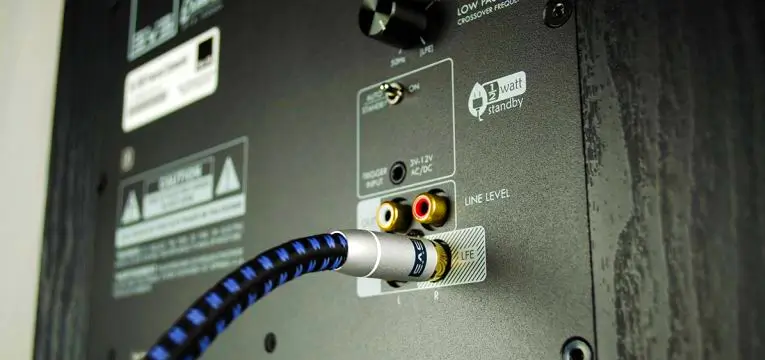
If you are new to the audio world, for example, bringing in new equipment to set up a new home theater, you may be perplexed by all of the many acronyms used.
Everything appeared so straightforward before you started attempting to connect the cords to their proper locations. You might know that LFE is an abbreviation for low-frequency effects, but what exactly does that mean?
The LFE cables are used to connect your subwoofer (low-frequency speaker) to the receiver it uses. Because the subwoofer is responsible for low bass tones (in other words, it serves a single purpose), it necessitates using a transmitter that transmits low-frequency audio waves. The left and right channels are merged in an LFE cable, allowing for a single wire to distribute the signals evenly and efficiently to the subwoofer.
More than likely, you will use an LFE input cable to connect your subwoofers to your amplifier. Left and right input are significantly less likely to be used these days; however, they are still possible.
Most individuals have discovered that employing an LFE input in a subwoofer would effectively transmit the necessary sound from the subwoofer to the receiver, resulting in effective audio production.
The subwoofer produces only low-frequency tones, and this is its main function (think of the deep bass in voice-overs during a movie or the low bass that you can hear in a car driving by).
As a result, the subwoofer must be capable of receiving audio signals that are meant for this speaker’s output: the lowest frequencies of audio production. This is made possible by the LFE input of a subwoofer, which allows for a single standardized connection to be used.
Instead of having to sort through a jumble of cords and cables, you can utilize an LFE input to connect your subwoofer to its receiver with a single cable. To avoid confusion regarding which cable goes where this can be beneficial. However, because this is the more usual (and preferred) form of connection, this probably is what you are accustomed to using as well.
What is RCA Input in a Subwoofer?
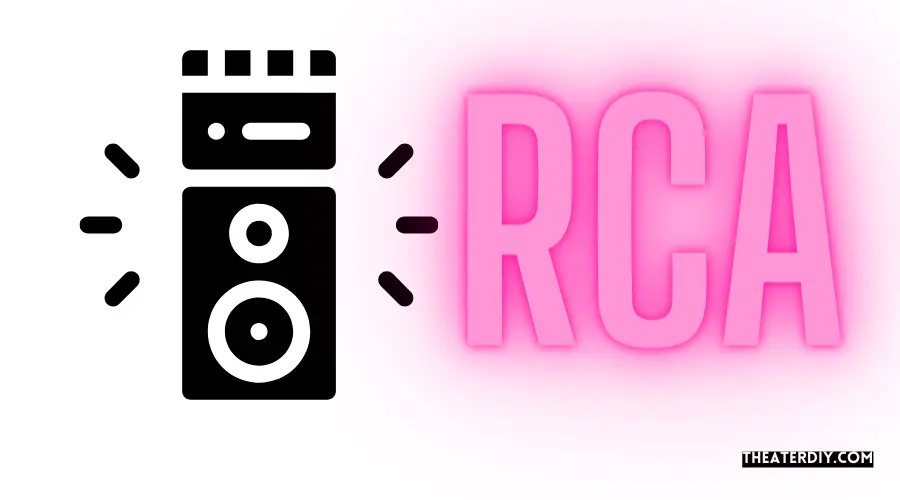
If, on the other hand, your subwoofer does not have an LFE input connection, you will find that your only alternative is to connect your subwoofer to the RCA (Radio Corporation of America) inputs on the right and left channels.
Even though it is less common and often less favored (since it requires two cables instead of one), it is effective and can achieve the desired result.
To achieve digital transmission of low-frequency signals for the right and left channels in a subwoofer, RCA cables are used with a right and left input cable (or split between the two with a Y-cable). An RCA input cable does not combine these audio signals as an LFE input cable; instead, the RCA input cable places them in specified locations: the right and left input options that connect the subwoofer to its receiver.
The RCA inputs for your subwoofer will be visible in the left and right input options for the subwoofer. Your subwoofer may offer the option of connecting via an LFE cable in addition to the left and right inputs.
Most users will choose to use an LFE cable in this instance, albeit it is not strictly necessary. In contrast to an LFE input, which only has a single wire, the left and right inputs work as a dual set.
Even though it is not significantly more complicated (requiring either one additional connection or the use of a y-cable to connect the right and left), it requires significantly more effort than utilizing an LFE input cable. Additionally, you may discover that the overall audio effects produced by the usage of RCA input are less than satisfactory. However, this is not always the case.
What Cable Do I Need to Connect Subwoofer to Receiver?
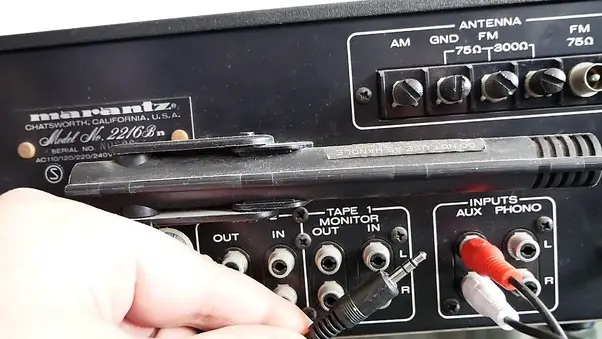
Following our discussion of a few acronyms and their various functions, you should have a clearer knowledge of the differences between LFE and RCA input cables in terms of their intended use. However, after reading this, you might still be perplexed as to which wire you’ll need to connect a subwoofer to its receiver.
Use an LFE input cable or an RCA line-in cable to connect a subwoofer to its receiver, depending on your preference (used for left and right input options). If your subwoofer has the option of using an LFE input, this will be your best alternative, assuming that it does. However, if this is not the case, an RCA input will suffice. Make sure you read the instructions that came with your subwoofer for further information on using it.
Identifying your subwoofer’s input and output options should be your first step if you are unsure of the cable you require or if your subwoofer even came with cables.
If you find that your subwoofer and receiver both have an LFE input/output option, this will be the quickest and most straightforward solution for you. If this is not the case, an RCA input cable will link the left and right inputs together.
Consider if it would be worthwhile to invest in a secondary subwoofer if your subwoofer does not have an LFE input option. If your subwoofer does not have an LFE input option, consider whether it would be worthwhile to invest in a secondary subwoofer to employ a dual connection. The use of an equalizer, in this case, will assist your subwoofers in balancing the communicated signals and achieving the desired impact of creating the transmitted audio effectively and efficiently.
Getting started in the realm of dual subwoofers might be intimidating, especially if you are unfamiliar with the technology. However, this is one of the reasons why you should engage or seek guidance from a qualified specialist.
While most audio professionals will recommend employing multiple subwoofers to enhance the distributive localization of the music and provide a more immersive surround sound experience, this may not always be feasible for your particular situation.
Are Dual Subwoofers Worth It?
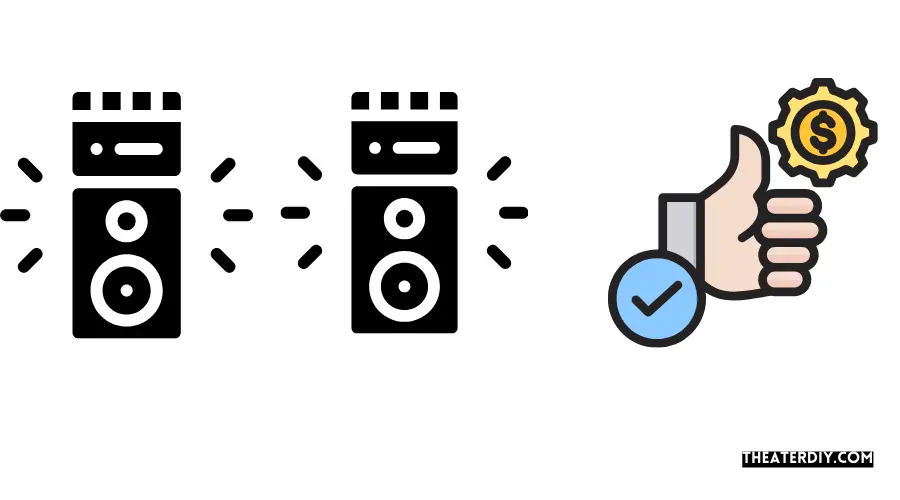
A common recommendation from audio experts is to use two subwoofers, but do you need this configuration for your basic audio demands in your home? You might be wondering if this is a necessary investment or if it is an unnecessary overkill that will increase the cost of your home sound system.
Dual subwoofers will provide a substantially more polished sound experience for low-frequency tones compared to a single subwoofer. Because using two subwoofers eliminates the capacity to localize the sound, you will perceive the bass as more of a “surround sound” effect than you would otherwise hear. With dual subwoofers, the equalization of signals can be completely avoided.
So, yes, dual subwoofers are a good investment if you have the money to spend on the additional equipment and the time to learn how to correctly set up the two subwoofers (or hire someone to do it for you). However, numerous online tutorials will walk you through setting up dual subwoofers, so not understanding how to do so should not prevent you from making the purchase.
A single subwoofer is used to produce the deep bass tones that can be heard emanating from this speaker when it is used. As you work to discover an ideal location for your subwoofer in your home, you should be able to reduce the need for your auditory processing skills to localize the sound in your environment.
This will be accomplished when the subwoofer is positioned in the center of the room, and you can perceive the bass as coming from a “head-on” direction.
When you employ dual subwoofers, on the other hand, you can more easily transition away from localizing the sound and can use the duality of the speakers to improve the surround sound effect further.
It is no longer necessary to locate the center of your living room to place your subwoofer physically; instead, you can use two and angle them so that they work well together in producing the surround sound effect. Gone are the days of carefully squatting in different positions in your living room to determine whether or not the bass can be heard clearly from all directions. Using a dual subwoofer arrangement will completely alleviate this problem for you.
Furthermore, dual subwoofers do not necessitate the equalization of transmitted signals, which is beneficial. Instead of being equalized inside a single speaker system, the dual subwoofer allows the transmitted signals to be equalized more effectively in two low-frequency speakers, which increases the system’s efficiency.
You may need to witness it to believe in the efficiency of employing two subwoofers rather than one to believe it.
While keeping these points in mind, try to put your theory to the test by visiting a friend or an audio store that can demonstrate the difference between using twin and single subwoofers. Adding a subwoofer to your home audio system will almost certainly prove to be a worthwhile investment.
Best Seller List of Subwoofers:

- 12" high excursion spun-copper Imp woofer
- 29 hertz – 120 hertz plus /- 3 dB
- 400 watt
- Max acoustic output 116dB
- Bass-reflex via rear firing port. Amplifier power (control/peak): 200 watts/400 watts

- 10" front-firing spun-copper IMG woofer
- All-digital amplifier with 300 watts peak power
- Volume low pass crossover and phase control
- Line level LFE RCA inputs for maximum receiver compatibility
- Dimensions 14 5" x 12 5" x 16 4"
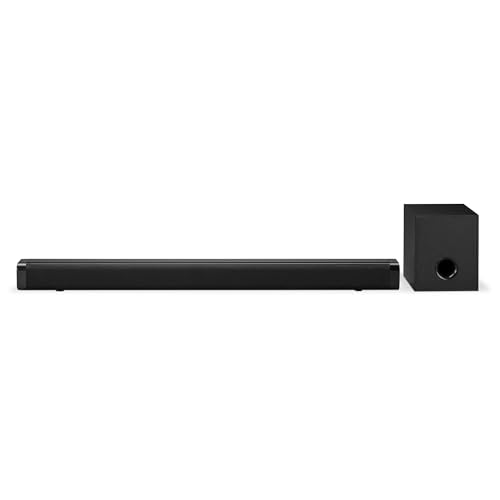
- 32" wirelss sound bar + wireless subwoofer delivers clear midtones and deeper, fuller bass. 2.1 channel stereo sound for rich, dimensional audio.
- Supports Bluetooth v5.0, Aux in (RCA audio inputs), Line in (3.5mm audio input), Optical digital audio input
- Frequency response: 140Hz - 16kHz gives you it all, from rumbling bass to stunning treble
- 3 sound mode settings: movie, music, dialog
- Wall mountable


- POWERED SUBWOOFER FOR EXTRA BASS & PUNCH – 10-inch Dynamic Balance woofer and configured directed port provide accurate bass depth that brings music and movies alive. The perfect home theater subwoofer for small-to-mid size rooms. Waterproof : No
- LOUDER CLEARER SOUND EVEN AT HIGH VOLUME – Enjoy a thrilling balanced audio experience with rich, deep sound, even at low frequencies, when using the 10 inch subwoofer. BLENDS EASILY WITH ANY SPEAKER & plays demanding nodes without distortion
- DOUBLE THE AMPLIFIER POWER TO 100 Watts of Power with its in-built 50-watt RMS amp. Sophisticated engineering featuring best in class resonance-free driver materials makes this subwoofer with built in amp highly durable and FIT FOR EXTENDED USE
- EASY TO INTEGRATE WITH EXISTING SYSTEMS – Hook up this compact subwoofer to the receiver and upgrade your music sound instantly. Features continuously variable 80-160 Hz crossover and 40-160 Hz (-3dB) frequency response
- A sleek detachable grille on the front, speaker and line-level inputs, speaker-level outputs on the back, plus a Phase Toggle Switch for multiple subwoofers, make this home subwoofer cohesive and complete


- All-in-One Complete SDR Series Dual 12-inch Loaded Subwoofer Complete Bass Package
- Peak Power: 2,400 Watts | RMS Power: 1,200 Watts
- Includes x1 Skar Audio SDR-2X12D4 Dual 12" Loaded 2,400 Watt Vented Subwoofer Enclosure
- Includes x1 Skar Audio RP-1200.1D Class D 1,200 Watt Monoblock Car Subwoofer Amplifier
- Includes x1 Skar Audio SKAR4ANL-OFC 4 Gauge Premium OFC Complete Amplifier Wiring Kit
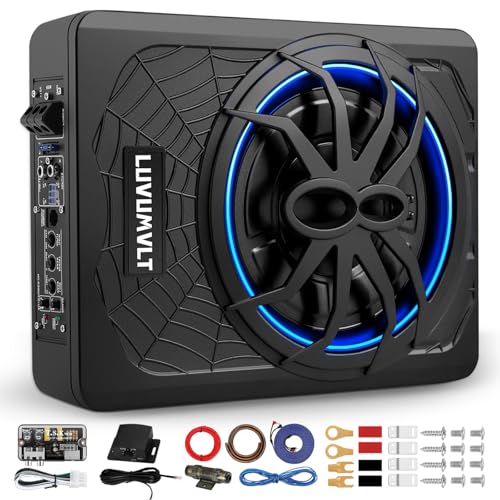

- Power Redefined -- Our upgraded subwoofer now delivers a staggering 1200W Peak Power (up from 800W), setting a new benchmark. Experience unmatched clarity and earth-shaking bass that transforms your car audio system. Feel every beat with incredible impact and immersive sound quality on every drive. Turn every journey into a thrilling, dynamic adventure!
- Bass Sculpted by Light -- Introducing our flagship subwoofer, where groundbreaking design meets deep bass performance. The heart of this powerhouse is its meticulously forged aluminum alloy grille, crafted with an intricate web-inspired pattern for exceptional strength and a truly distinctive look. Encircling it is a brilliant 360° dynamic LED halo, setting a new standard for automotive audio aesthetics.
- Ultra-Slim Space-Saving Design -- Experience powerful bass without sacrificing cabin space. At just 3.54 inches (90mm) thick, this subwoofer installs seamlessly under most car/truck seats. Engineered with precision acoustic architecture, it delivers dynamic, punchy low frequencies even in compact spaces – maintaining your vehicle’s clean interior while transforming every beat into multidimensional sound.
- Advanced Thermal Management -- Featuring aerospace-grade cast aluminum housing for 300% more efficient heat dissipation vs. standard steel enclosures. Ideal for confined under-seat installations, it maintains stable performance during extended drives or high-volume sessions.
- Wireless Acoustic Sovereignty -- Dominate every decibel with the dedicated RF remote – independently fine-tune gain, bass boost (0-12dB), and crossover (50-150Hz) while keeping your head unit untouched. Sculpt stadium-grade low-end textures whether cruising at 30mph or parked at sunset.
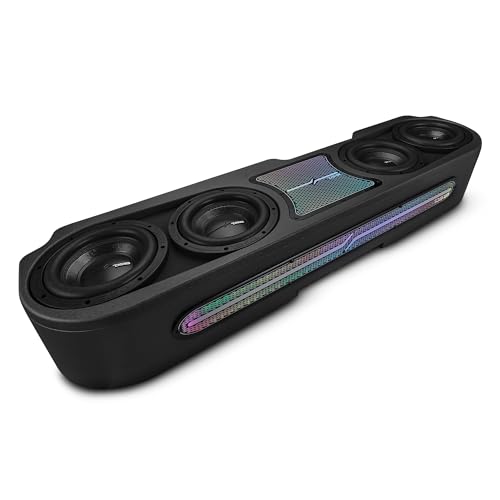

- Complete Bass Upgrade: Preloaded with four DS18 ZR8.2D 8-inch subwoofers, delivering up to 1800W RMS / 3600W MAX of deep, hard-hitting bass at a 1-ohm final load
- Perfect Fitment: Designed for 2020 and newer Gladiator models, this under-seat enclosure installs seamlessly without seat lift, preserving your factory interior look and space
- Premium Construction: Built from ¾” MDF, wrapped in black leather with acrylic accents, and engineered with sealed 0.88 ft³ chambers for ultra-tight, low-frequency response
- Show-Ready Lighting: Integrated Digital RGB LED Dream Lighting (12V) enhances your system’s look; fully customizable when paired with the DS18 LC-DRM Bluetooth controller (sold separately)
- Trail-Tested Durability: Rugged build ensures reliable performance both on-road and off-road, making it the ultimate audio solution for enthusiasts who demand power, style, and durability


- Spun copper front-firing Cerametallic woofers
- 10-inch, front-firing driver
- 150 watts continuous, 300 watts dynamic power
- Strong, flexible, removable grille
- All digital amplifier for high-efficiency and true-to-source sound accuracy


- POWERFUL BASS: 10" woofer with 600W peak/300W RMS output delivers tight, thumpy low end for movies, music, and gaming
- CLASS-D AMPLIFIER: Built-in amplifier precisely matched to the woofer and enclosure for clean, distortion-free sound
- ADJUSTABLE SETTINGS: Volume, crossover frequency, and phase controls allow you to customize your audio experience
- FLEXIBLE CONNECTIVITY: Features RCA line inputs/outputs and high-level speaker inputs/outputs to suit any setup
- DURABLE BUILD: MDF enclosure with high-grade vinyl finish and detachable foam grill for lasting performance and style


- Spun copper front-firing Cerametallic woofers
- 12-inch, front-firing driver
- 200 watts continuous, 400 watts dynamic power
- Compatible with almost any AV receiver
- Strong, flexible, removable grille
Last update on 2025-10-23


